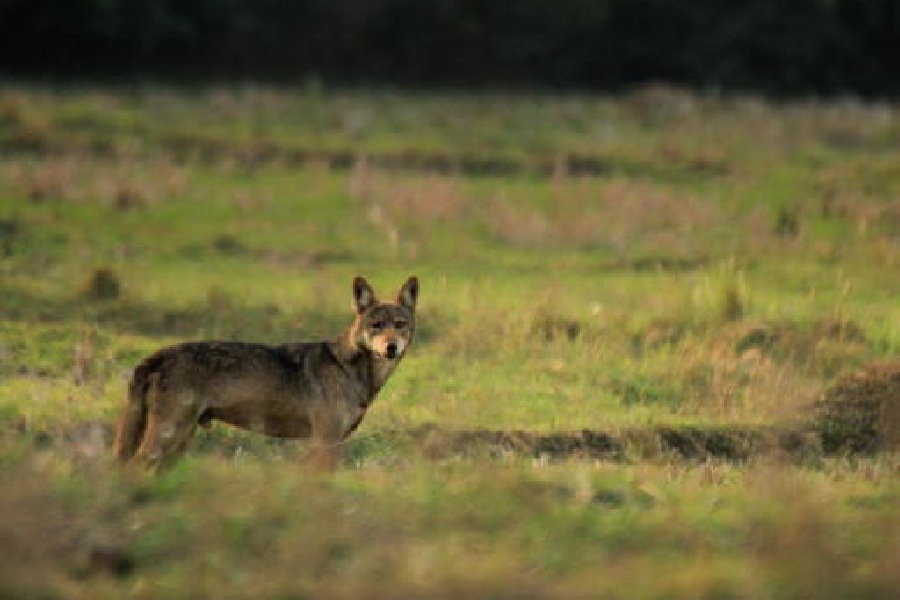A six-month survey in 2023 pointed to a pack of around 10 Indian wolves (Canis lupus pallipes) in a pocket of West Burdwan.
Now, a larger project is underway to assess the relative abundance of the predator and identify the human-wolf conflict hotspots in the district.
Camera traps are being installed at strategic locations in Garjangal, near the Ajay river and around 20km from Durgapur.
“It is one of the five wolf pockets we have identified in the district, based on feedback from the forest department and local residents. Ten camera traps will be placed at strategic locations in each of the five pockets in a phased manner,” said Arkajyoti Mukherjee, secretary of Wildlife Information and Nature Guide Society (WINGS), the NGO behind the project.
Between April and November 2023, the same NGO had conducted a study in Laudaha forest near Madhaiganj village, around 25km from Durgapur.
The study recorded a pack of “nine to 10” wolves. The leader of the pack was an alpha male with a damaged right eye. Two other adult males, two adult females, two sub-adults (one male and one female), and three juveniles were recorded.
“The previous study was just for a small pocket. The new one is for the entire district. There are three main objectives — estimate the relative abundance of these apex predators of the grasslands in West Burdwan, identify their migration routes and mitigate conflict with humans,” said Mukherjee, a wildlife researcher at IIT Kharagpur, who is leading the study with Sagar Adhurya, another researcher.
Wolves are known to maintain large territories. The study will help shed light on the corridors used by the wolves to go to or come from other districts. The animals prey on grass birds, Indian hare and rodents but also kill goats out for grazing and lift poultry from the nearby villages, stoking the risk of conflict.
Protected under Schedule I of the Wildlife Protection Act, 1972, Indian wolves or Indian Grey wolves are found across peninsular India in scrub forests, grasslands and arid areas.
A bulk of the population remains outside reserve forests and national parks — areas outside the ambit of census and similar exercises that focus on tigers, elephants and rhinos. Lack of surveys means their exact numbers are unknown. A forest official said they favoured semi-arid regions and ravine-like places, where it is easier to hide their puppies.
The habitat and distribution of wolves, hyenas and some other wild animals, said to be found in the forests of south Bengal was, till recently, largely undocumented.
But the situation has been changing over the past few years.
A study, commissioned by the state forest department and done by the Zoological Survey of India (ZSI), has “gathered ecological data on the distribution and population assessment” of small mammals like hyena (Hyaena hyaena), Indian wolf (Canis lupus pallipes), golden jackal (Canis aureus) and wild boar (Sus scrofa) in the forests of south Bengal, except the Sunderbans.
Its report was tabled in 2022.
Apart from the forest department, some wildlife agencies have also started supporting projects to study smaller carnivores in different pockets of the state.
The West Burdwan project is part of WWF-India’s flagship Conservation Catalyst Programme (CCP), which “supports grassroot conservationists and organisations to conserve wildlife and habitat, and helps awardees become more effective, structured and empowered”.
The 2023 study in a pocket of the district was supported by the Wildlife Trust of India.
“Apart from the pack in and around Laudaha forest (venue of the 2023 study), we don’t have recorded documentation of wolves in the district. But anecdotal records suggest more wolves in the district. We are looking forward to the new report so that we can take adequate steps for conservation,” said Anupam Khan, the divisional forest officer of Durgapur division.










